A comprehensive guide on how to play fast on the violin.
Have you ever come across a song you’ve really wanted to learn but feel like you just can’t play fast enough to do it justice? I know I have, and it’s so frustrating!
I wish I had a comprehensive practice guide when I was starting out. It would’ve saved me so much time and frustration! That’s why I’m sharing this guide that you can come back to any time you’re having trouble learning something fast.
We’ll cover how to learn fast-paced music, how to make your music faster, and general tips for playing fast on the violin.
Knowing how to practice will help you grow so much faster as a musician, and will help you avoid frustrating hours in the practice room, feeling unsure of how to fix what’s going on.
Before we get started, be sure to bookmark this page so it’s easier to find during your next practice session!
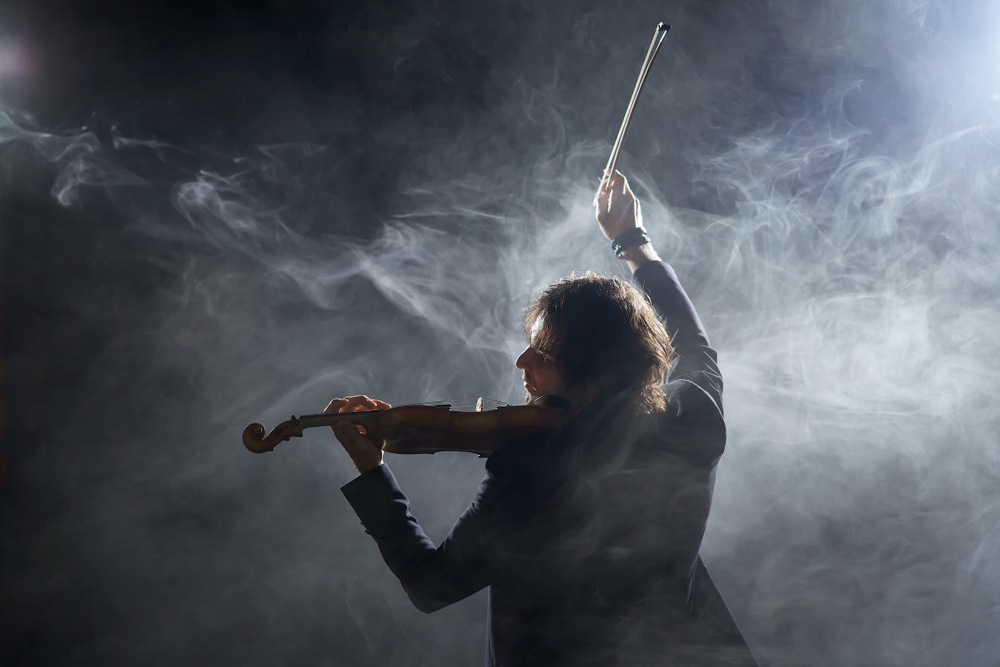
Learning Fast Material
When you’re facing a fast passage, you first have to learn it one way or another. Slow is the best way to go to learn what’s fully going on. Your brain has to understand it first before you can physically play it, and then your brain has to comprehend it fast enough to actually execute the music correctly.
Here are a few ways to begin learning something that’s supposed to be fast.
1. Say the finger numbers out loud
Say the finger numbers for a passage (or a measure, or a smaller group of notes) out loud to learn them. Next, play the same passage while saying the finger number before the note. Then play the passage while saying the finger numbers as you play each note. Last, play the passage normally.
This will help your brain and your fingers learn exactly what you need to do in the given passage. When learning fast music, we need our brains and fingers to move fast enough. This exercise is really great for your brain!
This can also be done by saying the note names or even the string names out loud. Switching through different variations of this exercise will help you internalize what’s going on even more. The better your brain knows it, the better you’ll be able to execute the music!
You can also gain confidence playing fast passages by practicing common finger patterns. Schradieck’s book of etudes is great for this! Choose an etude, or even just a line or two to practice. Test this exercise by going in small chunks. This will train your brain to read notes faster, and it’ll train your fingers to play faster!
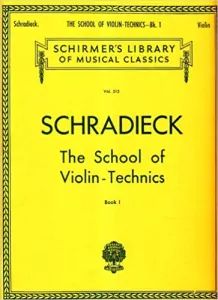
School of Violin Techniques by Henry Schradieck
Free Violin Sheet Music
2. Learn the left hand notes in clusters
This is another great exercise for both your brain and your muscle memory!
Find sets of finger placements in your music: place and set as many fingers as you can until one finger needs to move to a new place. That’s one block. Find a few (3 or so) blocks, and then switch through placing all the fingers needed in each block as fast as you can. You want to essentially sit all fingers down at once for each block.
Then go through each block with all the fingers needed down on the fingerboard and pulse through the notes you’ll play with your fingertips. Build it up to be very fast, but keep your thumb loose and relaxed.
Then try playing through the blocks as written. Your fingers will find their placements so much faster, and your brain will be one step ahead at finding each note.
This exercise in particular helps you think of the music in chunks, rather than as individual notes. When we think of each individual note, we tend to drag. Thinking in chunks will help your brain move faster through everything, and in turn, the music itself will be faster.
3. Practice just the left hand
A simpler exercise is just playing a passage with only your left hand–no bow needed.
Place your fingers deliberately, but don’t lift them too much. Keep your fingers down on the fingerboard as much as possible to avoid extraneous movements.
You can even take this exercise one step further by not lifting your fingers at all after they’ve played: just place them down the first time you have a unique note, then leave them down.
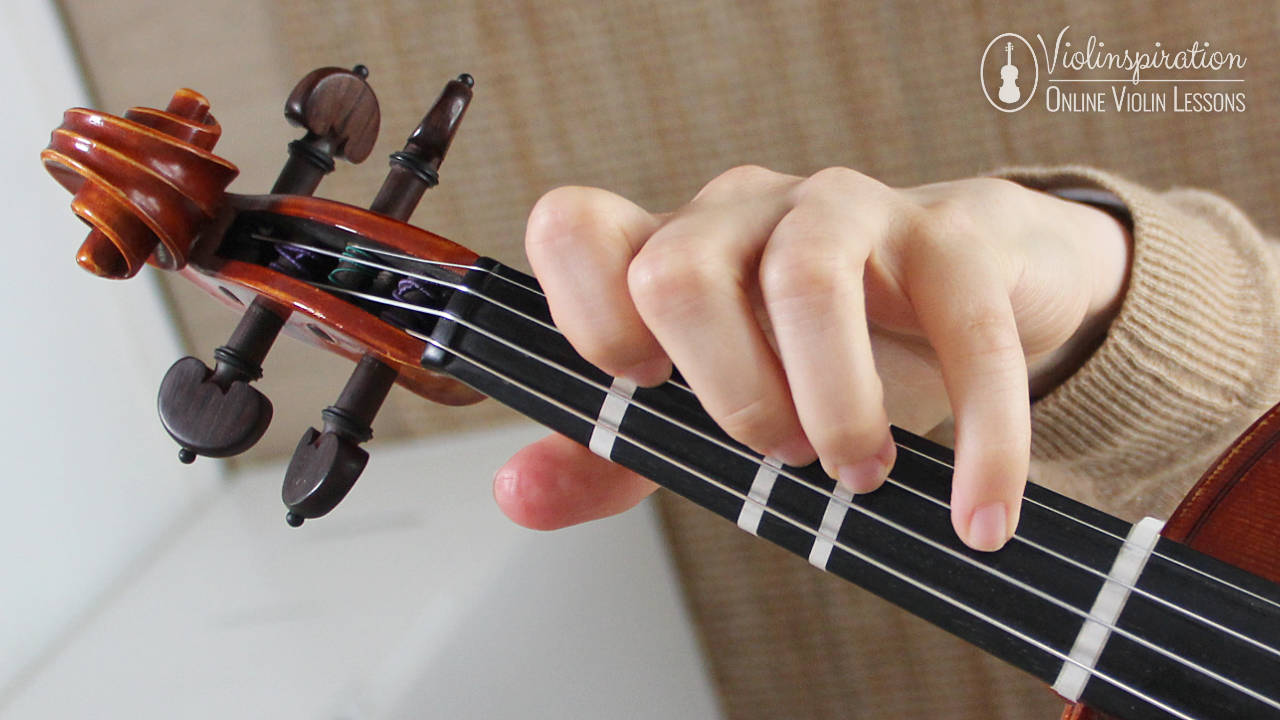
4. Practice slowly with the fast version in mind
One of the quickest ways to learn fast music is by practicing slowly. I know it sounds counter-intuitive, but it really works!
In order to play fast with accuracy, you need to know every single note, bowing, and articulation needed. It’s very difficult to pick up on absolutely everything when you’re only playing it fast. Give yourself time to read everything you need to do and to internalize it.
When you practice slowly, keep the end result in mind. If you’re practicing a section of sixteenth notes without slurs, think about how much (or little) bow will be required for each note when you get it up to tempo. You can even try the music at tempo once to see what sort of bow stroke actually works in practice.
As best as you can, stick with the actual bow stroke needed for the real tempo as you practice at your slow tempo. Use the same amount of pressure you’ll need later on. It might sound a little odd as you practice slowly, but remember that you’re training for the real thing.
If you practice slowly with long bows over and over again, your muscle memory will kick in when you go to play it fast. Have you ever tried to play a fast passage with too much bow? It just doesn’t sound quite right!
So, to make things easier on yourself, practice with the amount of bow you plan to use in the fast tempo even while practicing slowly. You’ll thank yourself later!
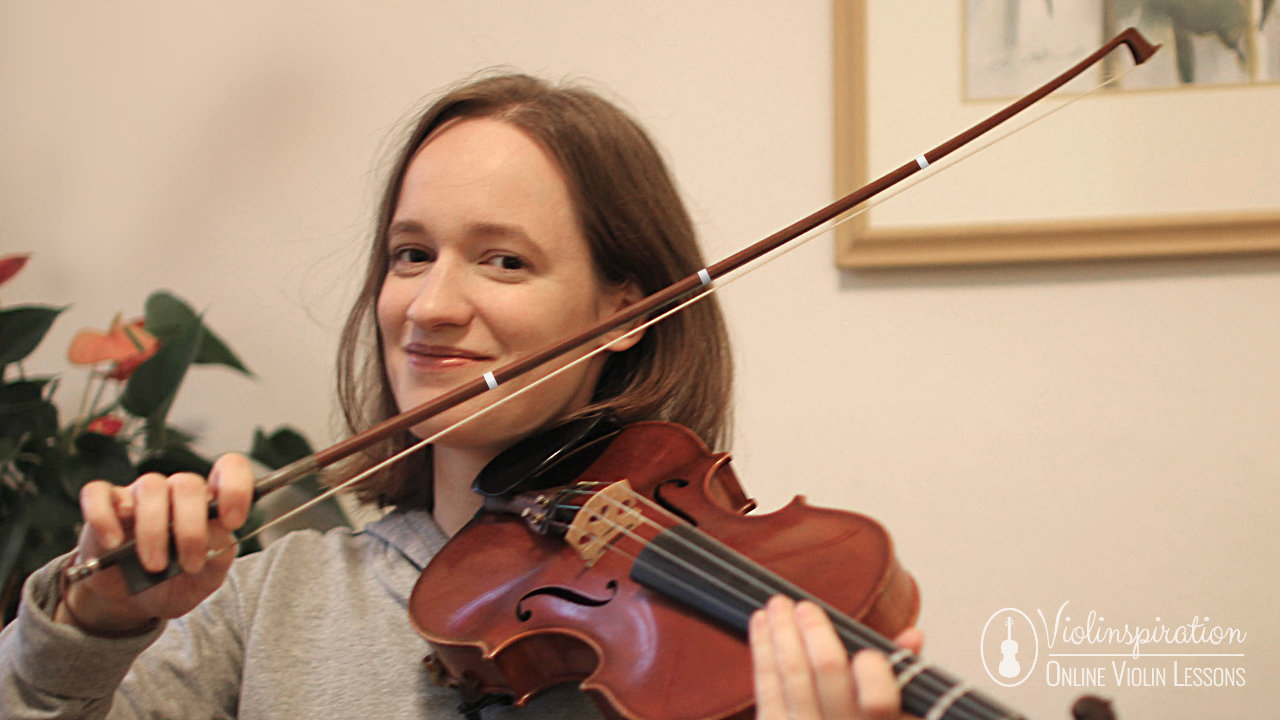
5. Practice in small groups of notes
If you can’t play the full passage fast, try this exercise:
Choose groups of 2-8 notes to play increasingly faster and faster. Practice one group until you feel it’s fast enough, then move on to the next group. Once the second group is faster, put them together and practice until you’re comfortable playing the two groups as one.
If this is too much at once, try practicing in very small groups of notes. When you’re ready to put two groups together, just take a small pause in between the groups to prepare for the next one. Then you can gradually take out that pause until you can play the two groups back to back flawlessly.
Keep working up the section this way until the entire passage feels more manageable.
How to Get Faster
Once you’ve learned the notes and rhythms slowly, you can start making the music faster.
1. Practice in very small chunks, fast
The most basic way to practice getting a song faster is by practicing slowly in small chunks. You could go line by line, phrase by phrase, or even measure by measure: any length that seems doable for you at first.
Start by playing one chunk at a comfortable tempo, then gradually speed it up. Go through the next chunk in the same way, then put them together.
Repeat tiny bits often to really internalize what’s going on. Practicing like this will help you learn each little bit of music in-depth, and will help you feel more confident.
2. Add rhythms
One of the best exercises you can practice to reach your target tempo is adding rhythms to an otherwise even section of music.
So, for example, if you have a section of steady eighth notes that you need to play faster, add dotted rhythms to them. First, you’ll practice the section alternating between dotted eighth notes and sixteenth notes. This makes the rhythm sound “long-short, long-short” over and over again.
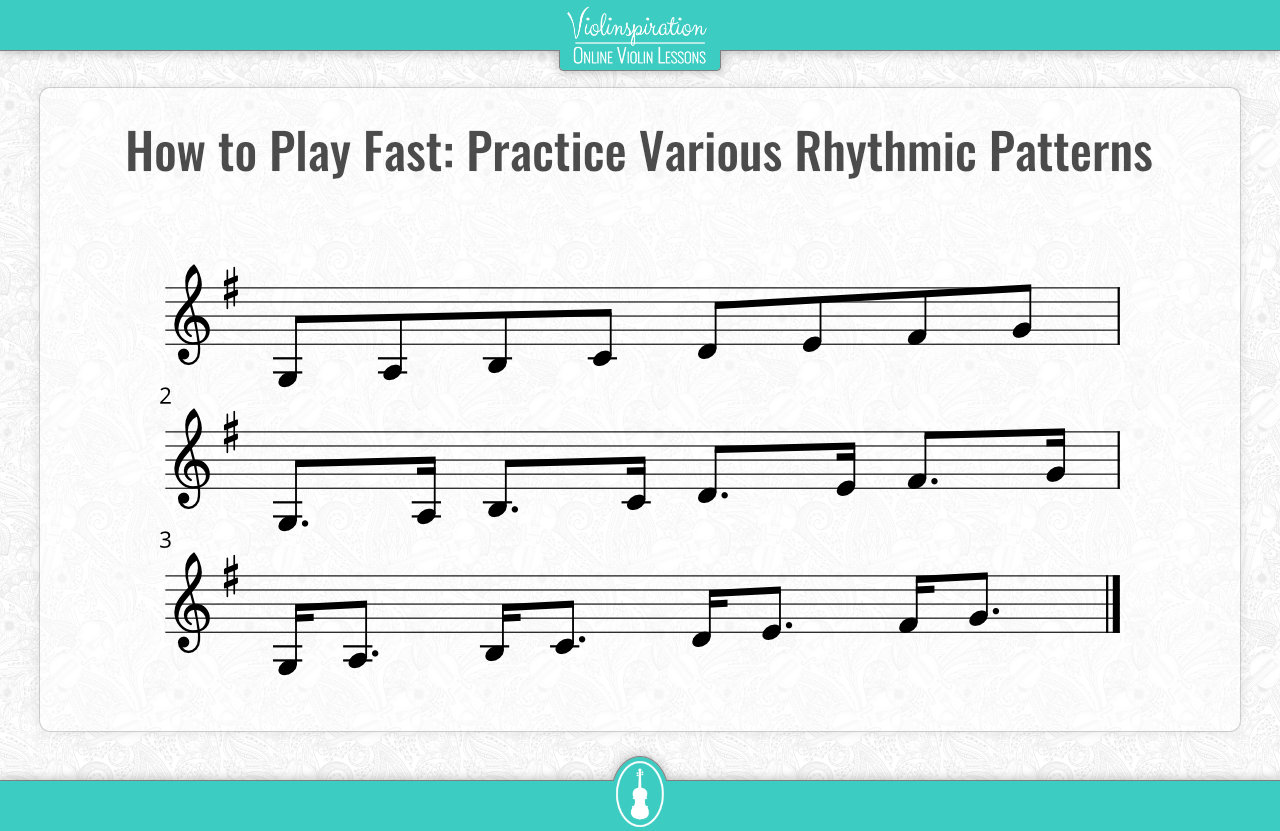
Practicing like this allows you to practice some notes (the sixteenth notes) fast, while the dotted eighth notes give you a moment to rest and think ahead.
After you practice that first rhythm, switch it so that you start with a sixteenth note and then move to a dotted eighth (short-long, short-long). Now the opposite notes will be fast, and the ones you’d practiced fast before are now your resting moments.
Then you’ll put the section back together evenly (as written), and you should notice that it’s now a lot easier to play it fast!
I’ve got for you a free booklet with rhythmic patterns so that you can practice this technique, download it here:
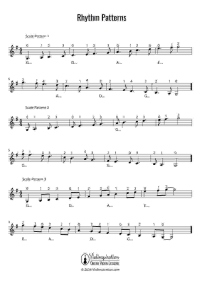
Rhythmic Exercises for Learning to Play Faster
Download Free Exercises
When you practice with uneven rhythms like this, always be sure to swap the rhythm so that you get a chance to play each note fast. Otherwise, you might start to accidentally play the passage with a dotted rhythm, which we don’t usually want!
3. Add accents
Similar to adding rhythms, you can also add accents to fast passages.
If you’re playing constant sixteenth notes, start by adding an accent to the first note of each sixteenth-note group. Then switch the accent to the second note of each group. Keep going in this way, and be creative: maybe add an accent to the first and third notes of each group.
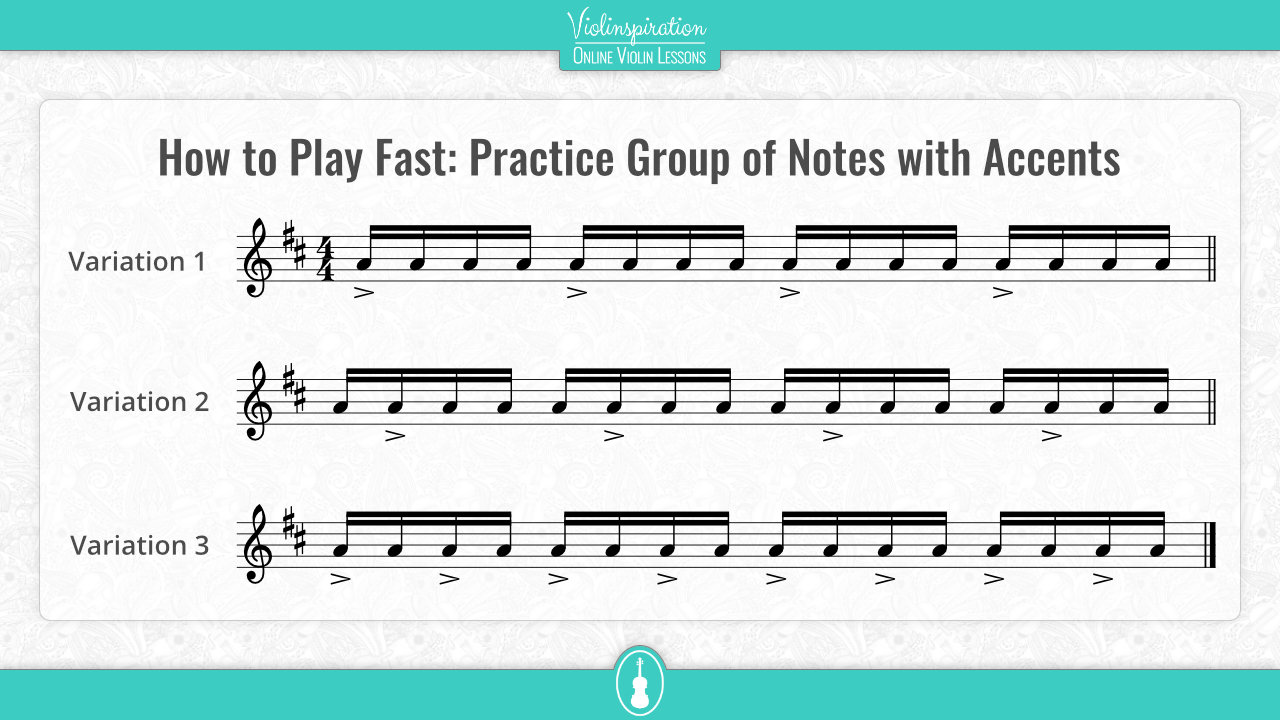
This exercise also allows you to rest just a little bit, and it almost feels like putting a spotlight on different notes. By playing the accent, you can really hear the note you’re playing and double-check that it sounds correct.
4. Anticipate notes
If you’re playing notes across different strings, prepare your fingers for those upcoming notes whenever you can. This is a bit of a general tip for playing fast, but you can really take it to the extreme and use it as a practice technique.
When we’re playing fast notes on the violin, it’s best to leave your fingers in place as much as you can. If you’re changing strings, have the next finger ready to go. If you’re coming right back to a note, keep that finger down if you can to avoid extraneous movements.
If the passage allows it, practice finding the notes with double stops; your left hand will work in the same way in the passage when you play it as written, except your bow is changing strings. Practicing the notes as double stops helps you find the notes faster and prepare as you should to play the passage.
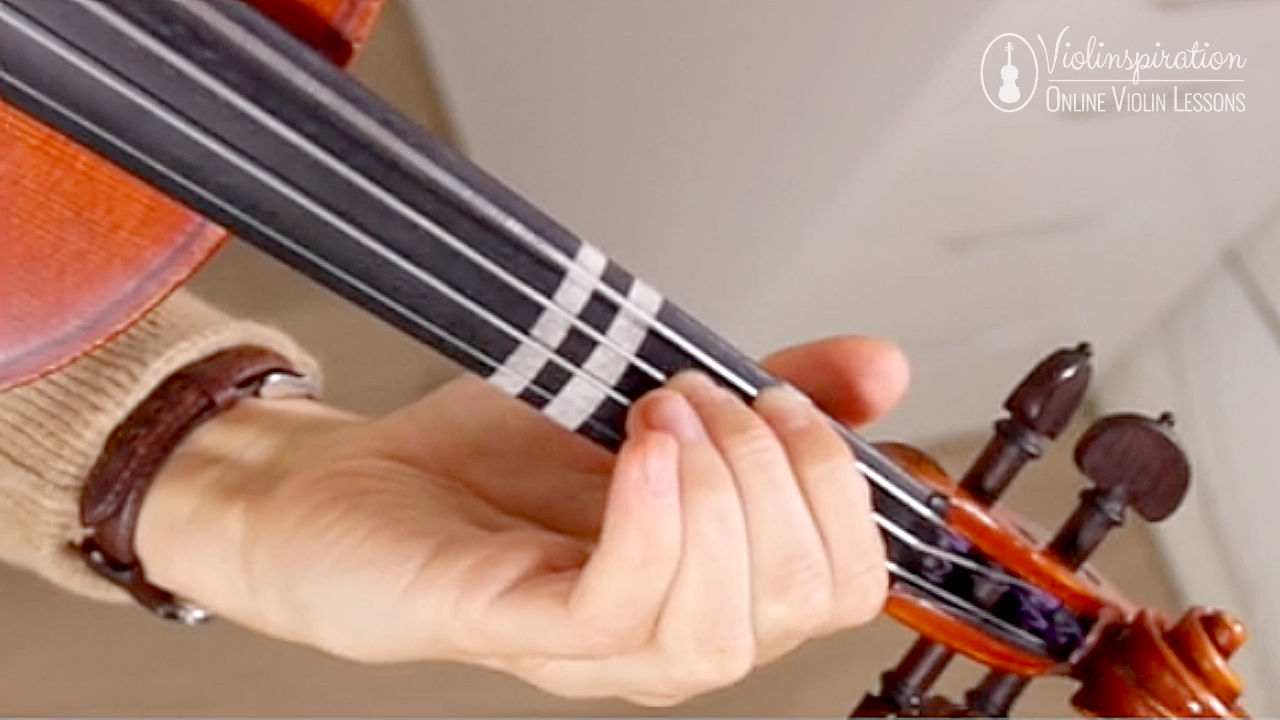
Metronome Work
One of the best ways to reach your target speed is by practicing with a metronome. It can sound like tedious work, but I promise it’s so helpful!
Need a metronome to practice with? I’ve got you covered! Use my free online metronome for these next exercises. 🤗
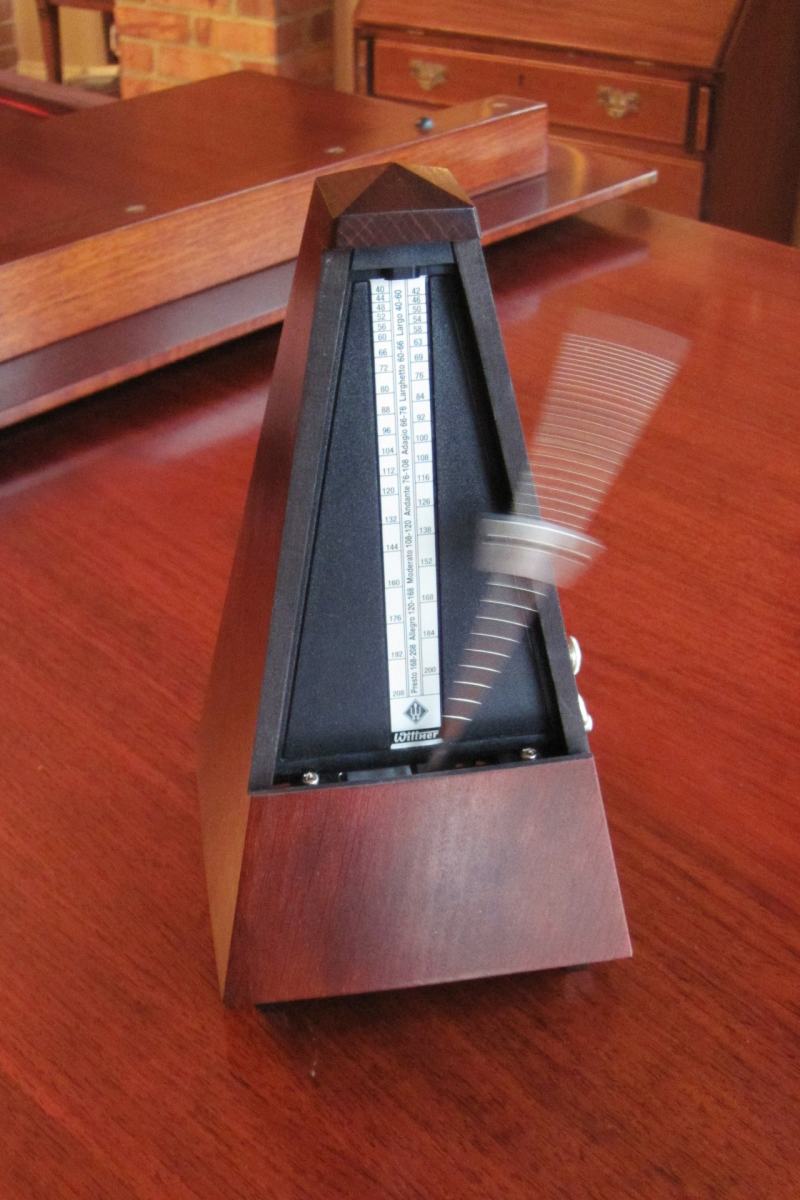
1. Slow metronome practice
First, practice slowly with a metronome to be sure you’re playing the notes and rhythms correctly and evenly.
It may not seem like this will help you play faster, but you do want to be sure that you’re playing everything correctly before making it fast. If you work hard to make a passage fast and then realize that you’re playing a wrong note or rhythm, it’s a lot harder to fix.
Do the basic work slowly, and you’ll end up learning the music a whole lot faster!
2. Faster metronome practice
To start making a passage faster, I suggest increasing the metronome speed 3-5 clicks at a time.
Start by playing your passage at a speed you’re comfortable with, then find the metronome number that aligns with that tempo. Make sure everything you’re playing lines up perfectly with the beat.
Then increase the speed by 3-5 clicks and practice the passage again. Did any sections stand out? Those might be spots you should practice slowly again. Practice at this new tempo until it feels as easy to play as the original speed did.
Increase the speed again, and keep working in the same way until you either reach your goal tempo or are ready to move on for the day.
The next time you practice, you may need to start at a slightly slower speed than wherever you ended in your last practice session. That’s okay, and it’s normal! You just have to get into the groove again and internalize the finger pattern and bow directions a bit more.
Progress comes in peaks and valleys. One day you might accomplish a lot, and other days you may need to go back and review the basics. We all go through this, and it’s a very normal part of learning violin!
3. Metronome checks
If you notice yourself playing with uneven notes, rushing, or slowing down, put the metronome on so that you hear one click per measure (or alternatively two clicks per measure), and play the passage. The goal is to stick with the metronome even though you’re hearing fewer beats.
This is a great way to check that your internal tempo is steady. This exercise can be quite difficult, but so helpful.
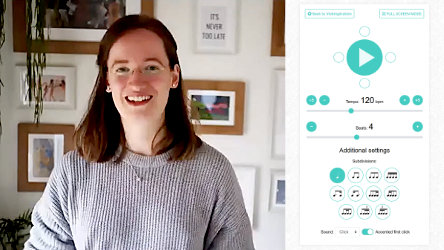
Metronome Practice Techniques Workshop
Free Video
How to Play Faster – Violin Technique
It’s one thing to practice a section faster, but actually being able to play fast in general can be an entirely different beast.
Here are a few exercises and reminders for playing fast on the violin.
1. Small string crossings
Keep your movements very small when playing string crossings. The more you change the angle, the longer it’ll take to travel to the next string and the more jarring it’ll be.
Experiment on the A string. How far over to the right can you play without bumping the E string? Then go to the E string and see how far to the left you can play without bumping the A string.
By playing on these parts of the strings, you can make your string crossings a lot faster and save a ton of time! It’ll also feel like a lot less work in your bow arm when you play with small string crossings.
Struggling with string crossings? Watch my tutorial to achieve clean string crossings!
2. Keep fingers close to the fingerboard
When you want to go fast, play on your fingertips and keep your fingers close to the fingerboard.
The further your fingers are from the fingerboard, the longer it’ll take for them to come back down. That’s valuable time that could slow the music down!
Playing on your fingertips will also help them move faster and with better agility. Try wiggling your left hand fingers in the air without bending them. How fast did they move? Now try wiggling your fingers while keeping them curved. Did you see how much faster they moved?!
This is why we want to keep our fingers rounded while playing: it makes them go so much faster, and it’s a lot easier to control them.
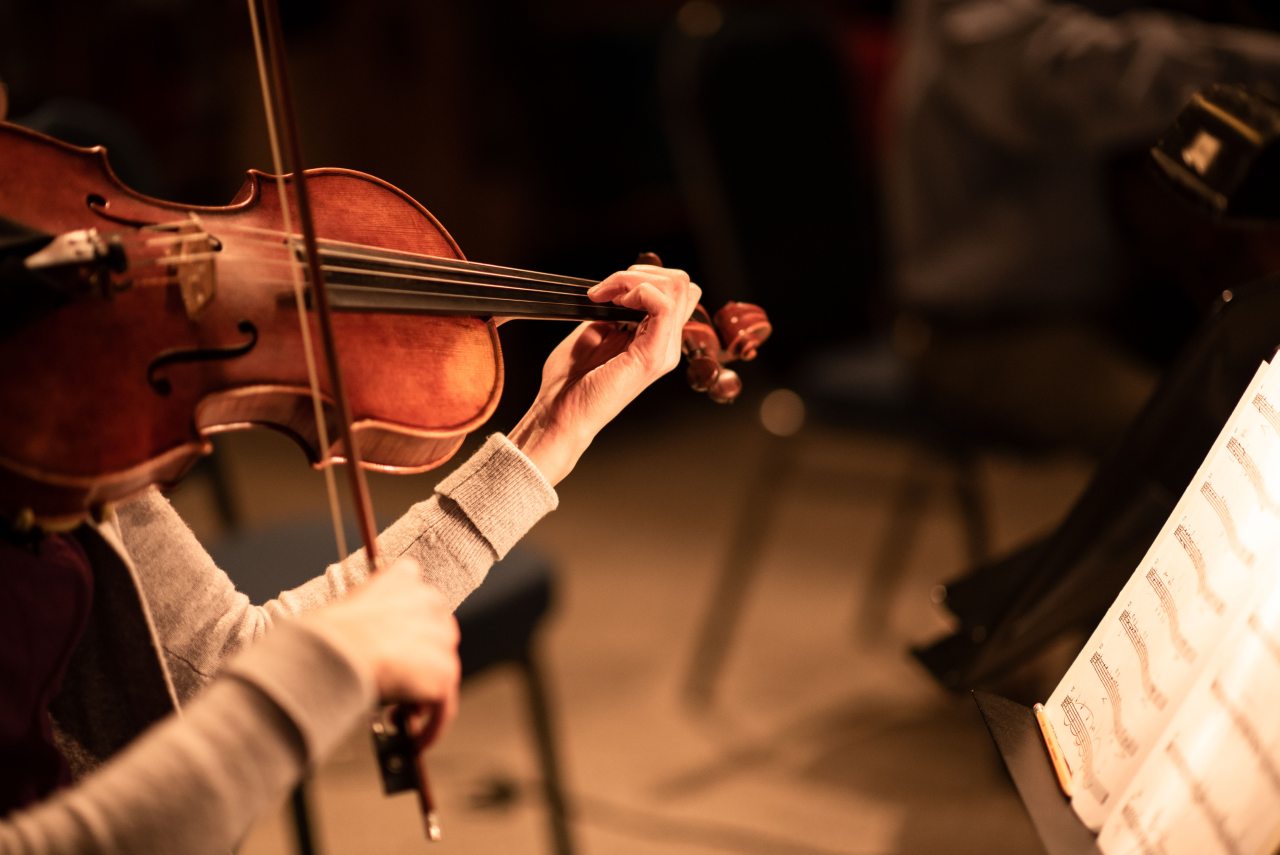
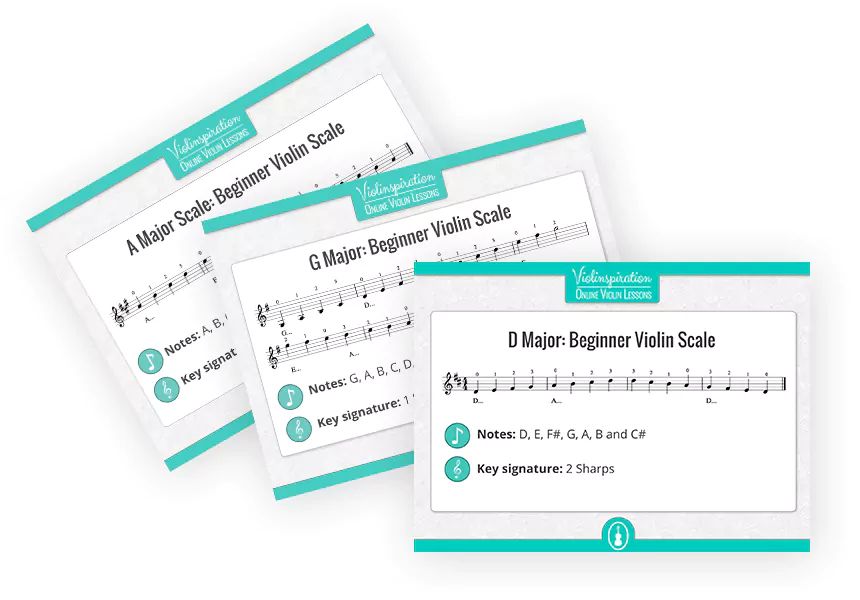
Free Download: 5 Most Common Violin Scales
for Beginners
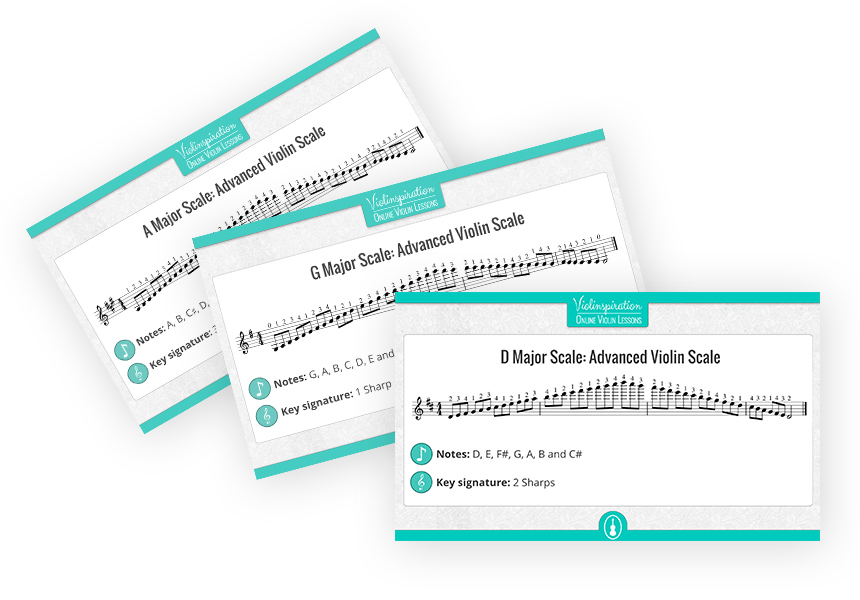
5 Most Common Violin Scales
for Advanced Player
Many virtuosic moments in violin music are actually just arpeggios. Practicing arpeggios will help you approach these passages easier, and will help you learn your fingerboard more intimately, which will make your playing stronger and more confident all around.
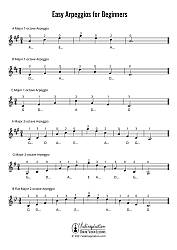
Arpeggios for Beginners
Get Free Easy Exercises
A good number of pieces will use chromatic scales to add interest. Dance of the Sugar Plum Fairy from The Nutcracker and The Phantom of the Opera are great examples of chromatic scales used in melodies. You can learn to play a lot faster by practicing chromatic scales. Start slowly, then build up the tempo over time. Your fingers will thank you later!
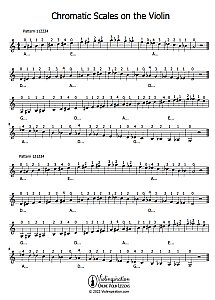
Chromatic Scales for Violin
Free Exercises Set
4. Practice finger exercises
Stretching and keeping your fingers nimble promotes agility and will help you play faster. Playing the violin can also feel more comfortable when your fingers are stronger!
We can do finger exercises both on the violin and off. Stretching away from the violin will strengthen your fingers, and trying finger independence exercises on the violin will help you play faster and more accurately.
Try a few finger exercises and see if you like them!
Synchronizing Both Hands
Sometimes when we’re trying to play fast and it just doesn’t sound right, the reason behind it is that our left and right hands aren’t moving at the same speed.
Here are a few exercises to help you synchronize both hands.
1. Play with a stopped bow
If you find that one hand is moving slower than the other, try a small section with a “stopped bow”.
What you want to do for this exercise is play with a martelé bow stroke, with small pauses in between notes. While the bow is stopped, find the next note with your left hand. Play the note martelé, then find the next note. Go on and on like this, eventually speeding the section up and making the pauses smaller and smaller.
Even practicing a section martelé but without pauses will help you understand when you want each note to sound, where in the bow you want to play the notes, and how they’ll sync up. Keep bowings and fingerings the same. You can even stop the bow within slurs.
Put the music back together as written, and the effect will feel like magic! Everything will be so much cleaner!
2. Take out slurs
Sometimes we’ll play a fast passage with the left hand with long slurs in the right hand. If you notice that the left-hand notes sound sluggish or unclear, try playing the passage with all separate bow strokes. You want to hear each and every note very clearly.
When we play with all separate bows, it’s easier to identify which notes are getting glossed over, and which may be out of tune. This exercise is somewhat of a gateway to other exercises; once you’ve determined which notes aren’t going right, choose a different practice technique, maybe playing with only the left hand or adding in rhythms, to fix what isn’t going well.
Then, add the slurs back in once the passage is smoothed out with your left hand.
More Advice on Playing Fast on The Violin
There are a few other general tips I’d like to go over today to give you a comprehensive idea of how to play fast on the violin.
First, stay relaxed both physically and mentally. Tense fingers won’t move as fast as loose ones, and worrying will slow you down. Take a deep breath before you play, and always think forward.
On that note, always prepare and think ahead. Deeply analyzing what just happened will slow you down (which is why recording is so helpful), and when you’re playing fast, you need to plan ahead in order to prepare your left-hand fingers and bow for all that you need to accomplish.
Finally, go back to the basics: check that your left hand is moving correctly and that you’re using the bow efficiently. Good posture on the violin is meant to aid all styles of playing, especially fast passages!
Learn Even More
Be sure to bookmark this guide so you can access it quickly the next time you need practice advice!
Keep a level head and practice slowly. Don’t get discouraged, no matter what happens in the practice room. You’re capable of learning fast music, although it may take time. You’ve got this! 💪
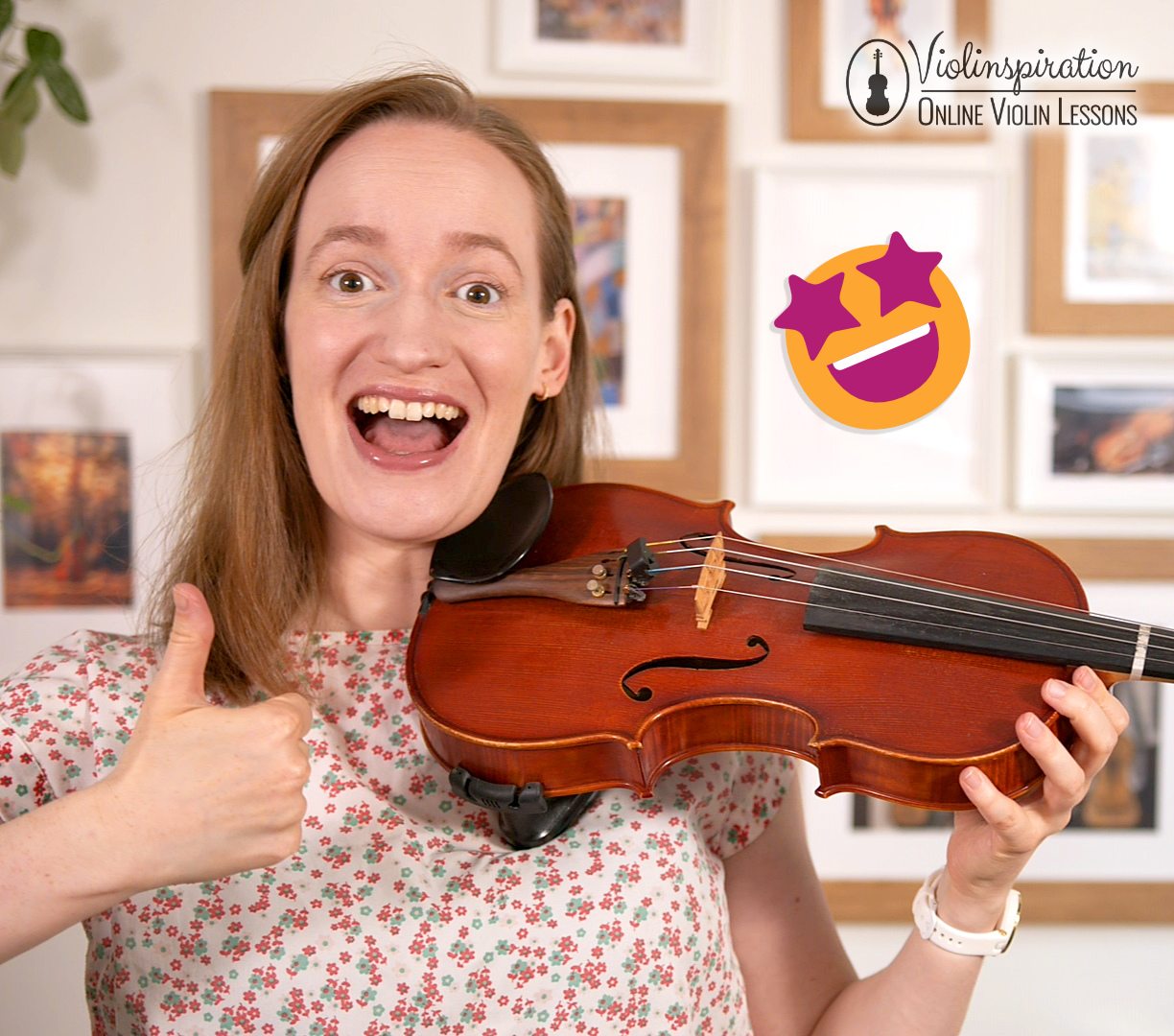
Do you have the practice bug now? Want to add more great practice tips to your toolbox? Learn about 6 advanced violin exercises or build your own violin practice routine next!
Free Violin Sheet Music in Your Inbox
Subscribe to my mailing list to receive free sheet music, playing tips, a weekly portion of motivation, and never miss a new video or course I release!
























